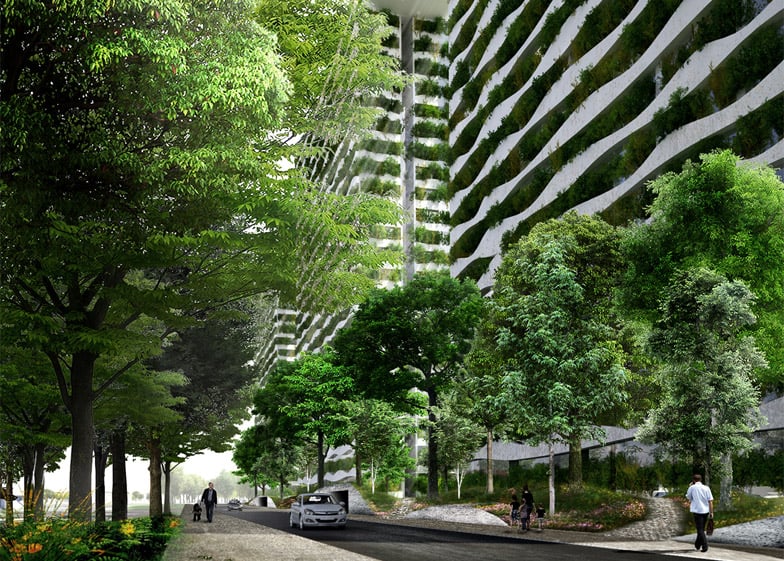Vietnamese studio Vo Trong Nghia Architects has unveiled plans for a trio of housing towers in Ho Chi Minh City linked by aerial bridges and shielded from the harsh tropical sunlight by swathes of bamboo (+ slideshow).
The three 22-storey-tall blocks will be linked by a planted roof garden and bridges, and a series of small pavilions that overlook the waterways and city below.
Located just over two miles from the centre of Ho Chi Minh City, the Diamond Lotus housing scheme is designed by Vo Trong Nghia's studio for a finger of land between two rivers that wind through the city to the East Vietnam Sea.
The tower blocks will provide 720 homes on the 8,400-square-metre site, each with access to planted balconies and the roof garden.
"The three volumes are appropriate for large-scale housing and the roof of each is connected to resonate with Vietnamese Feng Shui," said the studio. "The connected roof provides the residents with a large green space, which rarely occurs in the city."
Bamboo-filled planters will sit along the wavering white balconies that surround the 22 levels of the towers. The stems will create a sun-filtering screen around the apartments, providing shade from the sun and an elevated garden for each residence.
"While other developments are expediting the loss of greenery in the city, the green bridge and green facade of this project are regarded as not only a dedication to the comfort of inhabitants," said the architects, "but also a contribution to the landscape, appearing as a green screen in the city."
"Within the urban density of small and humble houses without greenery, this project will provide the first green landmark in Ho Chi Minh City to change the inactive mindset created by lack of greenery."
A pair of U-shaped structures that support the tension cables for the bridges will illuminate the building at night.
Vo Trong Nghia has previously claimed that bamboo "will replace other materials" in the future of building construction and also used the hollow stems to create 25 trumpet-shaped structures based on lotus pods for the Vietnamese pavilion at the World Expo 2015 in Milan.
Like the university campus the firm designed for Ho Chi Minh City, the pavilion too featured full-sized trees growing on its rooftops.
The studio, which has offices in both Ho Chi Minh City and Hanoi, is known for its use of planting in an effort to replace the greenery destroyed in the construction process. It is also working on another university in Ho Chi Minh City, featuring a chequerboard facade with verdant screens.
Project credits:
Practice: Vo Trong Nghia Architects
Principals: Vo Trong Nghia, Kosuke Nishijima, Tran Thi Hang
Architects: Kuniko Onishi, Tran Thi Thanh Tuyen, Tran Vo Kien, Victor Llavata
Client: Phuc Khang Corporation








